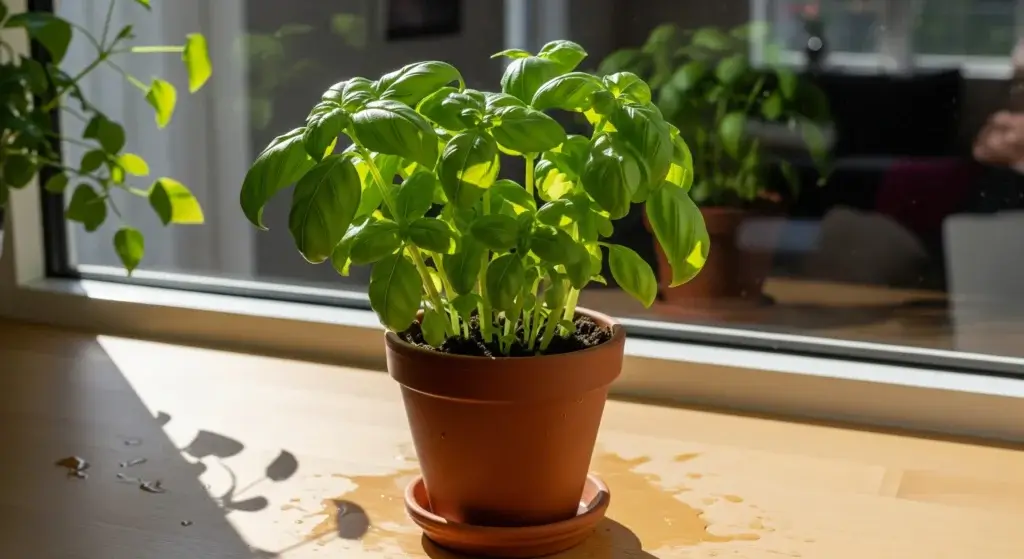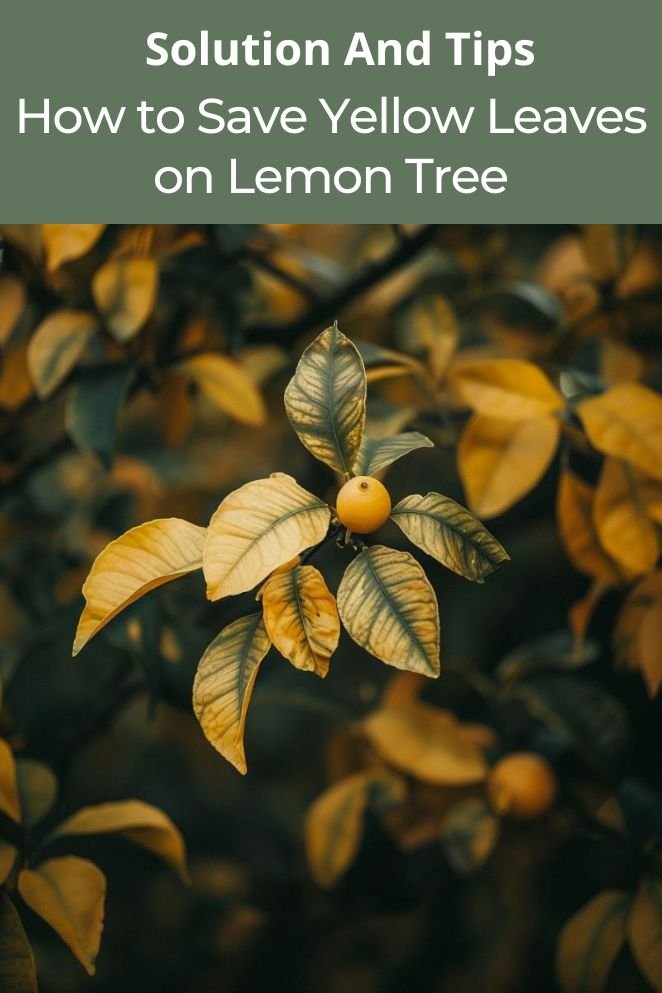
Lemon trees are a popular choice for home gardens due to their vibrant green leaves and delicious fruit.
However, if you notice your lemon tree’s leaves turning yellow, it can be a cause for concern.
In this article, we will explore the common causes of yellow leaves on lemon trees, how to diagnose the issue, and provide solutions to get your tree back to health.
Causes of Yellow Leaves on Lemon Trees
Environmental Stress
Lemon trees, like all plants, can experience stress from various environmental factors. Identifying and addressing these stressors is crucial for maintaining a healthy tree with vibrant green leaves.
Let’s explore some common issues:
Overwatering
One of the most frequent problems is overwatering.
When you water your lemon tree too much, the roots can become suffocated and unable to absorb essential nutrients.
This lack of nutrient uptake can lead to the yellowing of leaves as the tree struggles to survive.
To check if your tree is overwatered, stick your finger into the soil up to the first knuckle.
If the soil feels wet, it indicates that you might be overwatering.
- Read also: Saving Your Harvest: Solutions for Yellow Leaves on Tomato Plants
- Read also: Yellow Leaves on Hibiscus: Causes and Treatments Tips
Underwatering
Conversely, not giving your lemon tree enough water can also cause stress.
When a lemon tree is underwatered, it conserves water to survive, which often results in yellow leaves.
Regular watering is essential, especially during hot or dry periods.
Lack of sunlight
Lemon trees thrive in sunny environments and require at least 6-8 hours of direct sunlight each day for optimal growth and photosynthesis.
Without sufficient sunlight, the tree cannot produce the energy it needs, leading to yellowing leaves.
Cold temperatures
Young lemon trees are particularly vulnerable to cold weather.
Exposure to cold temperatures can cause significant stress, resulting in yellow leaves or even leaf drop.
To protect your lemon tree from cold damage, consider moving potted trees indoors during colder months or covering outdoor trees with frost cloths.
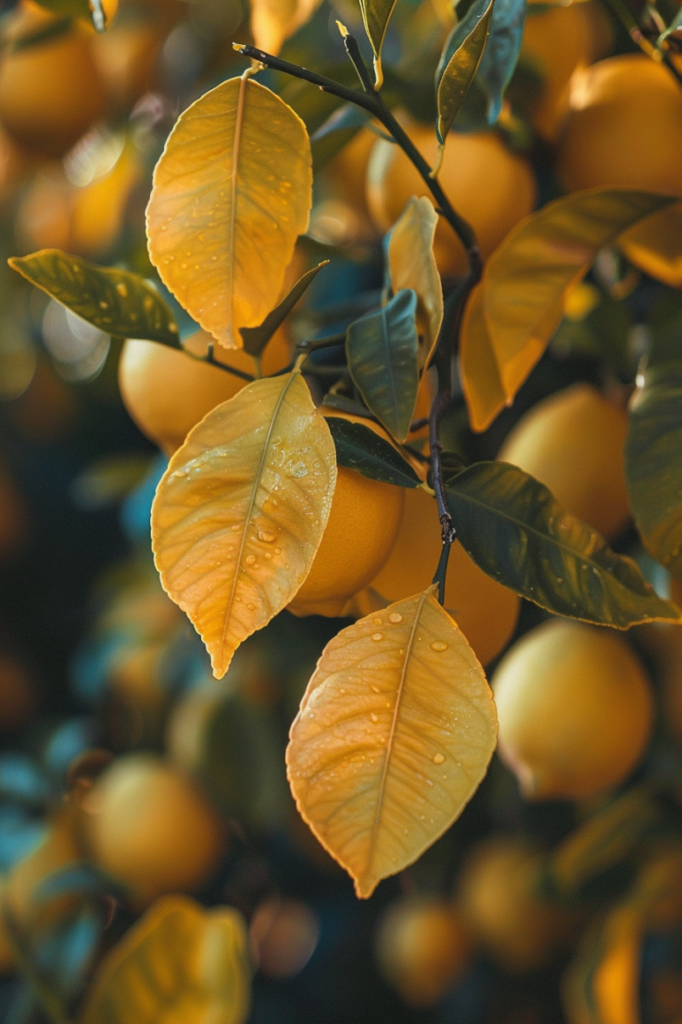
Nutritional Deficiencies
Nutritional deficiencies can significantly impact the health and appearance of your lemon tree. Let’s delve into three common nutritional deficiencies:
Magnesium deficiency
Magnesium plays a vital role in photosynthesis, the process by which plants convert sunlight into energy.
When a lemon tree lacks magnesium, you might notice yellowing between the veins of older leaves, a condition known as interveinal chlorosis.
This deficiency occurs because magnesium is mobile within the plant, and the tree prioritizes new growth, drawing magnesium away from older leaves.
Nitrogen deficiency
Nitrogen is a crucial nutrient for the overall growth and development of lemon trees, particularly for leaf production.
When a tree is deficient in nitrogen, you’ll see a general yellowing of the younger leaves.
This happens because nitrogen is also a mobile nutrient and is relocated to support new growth, leaving the older leaves with insufficient nitrogen.
Iron deficiency
Iron is essential for chlorophyll production and overall plant health.
When a lemon tree suffers from iron deficiency, you might observe yellowing leaves with distinct green veins, a condition called chlorosis.
This typically affects new growth first because iron is not as mobile within the plant, so the younger leaves show symptoms more quickly.
Pests and Diseases
Pests
Lemon trees can be invaded by a variety of pests, including aphids, scales, and other sap-sucking insects.
These pests extract the sap from the leaves and stems, depriving the tree of essential nutrients.
This process weakens the leaves and often results in yellowing.
Here’s a closer look at some common pests:
- Aphids: Small, soft-bodied insects that cluster on new growth and the undersides of leaves.
- Scales: Tiny, immobile insects that attach themselves to the stems and leaves. They are often covered in a protective waxy coating and can be hard to spot.
Diseases
Lemon trees can also fall victim to various diseases, particularly fungal infections, which can cause yellowing leaves and other symptoms.
- Citrus canker: This is a bacterial disease that causes yellow halo-like lesions on leaves, stems, and fruit.

Diagnosing the Cause
Yellow leaves on your lemon tree can be a sign of various issues, ranging from nutritional deficiencies to environmental stress or pests.
To accurately diagnose the problem and provide the best care, follow these steps:
Observe the leaves
Begin by closely examining the pattern of yellowing on the leaves.
Pay attention to whether the entire leaf is yellow, if the yellowing is concentrated between the veins, or if it affects the veins themselves.
This observation can provide important clues:
- Entire leaves: If whole leaves are turning yellow, it might indicate a more systemic issue like overwatering, underwatering, or a significant nutrient deficiency.
- Between the veins: Yellowing between the veins, while the veins themselves remain green, often points to a magnesium deficiency.
- Veins and new growth: If new leaves are yellow with green veins, it may suggest an iron deficiency.
Check the Soil Moisture
Next, assess the soil moisture to determine if improper watering practices might be causing the yellow leaves.
Here’s how you can do this:
- Feel the soil: Insert your finger into the soil up to the first knuckle. If the soil feels wet and soggy, your tree might be overwatered. Conversely, if the soil feels dry, it could be underwatered.
- Watering practices: Consider how often and how much you water your lemon tree.
Consider Environmental Factors
Environmental conditions play a significant role in the health of your lemon tree.
Reflect on recent weather and changes in your tree’s environment:
- Temperature changes: Have there been any sudden drops in temperature? Cold snaps can cause yellowing leaves, especially in young trees.
- Sunlight exposure: Ensure your lemon tree is receiving at least 6-8 hours of direct sunlight daily..
- Seasonal changes: Seasonal shifts can affect your tree’s water needs and exposure to pests or diseases.
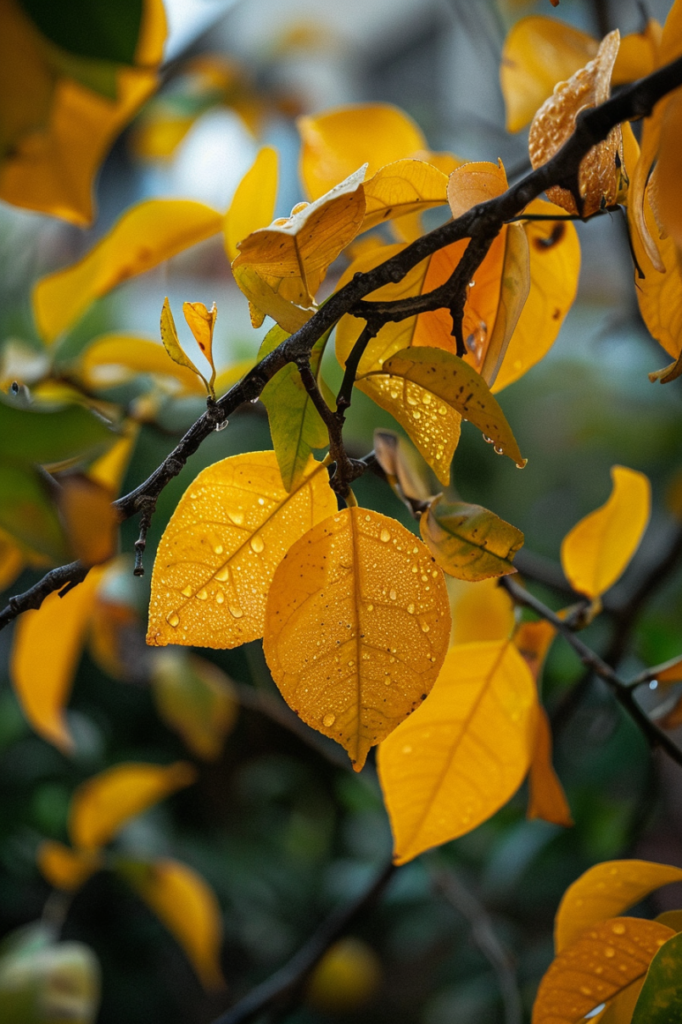
Solutions for Yellow Leaves
Yellow leaves on your lemon tree can be a sign of various issues, but there are straightforward solutions to help restore its health and vitality.
Let’s explore the key strategies to address and prevent yellow leaves:
Watering
Proper watering practices are crucial for the health of your lemon tree.
Overwatering or underwatering can lead to yellow leaves.
Here’s how to water your tree correctly:
- Check soil moisture: Before watering, check the moisture level by inserting your finger into the soil up to the first knuckle. If the top inch of soil is dry, it’s time to water.
- Deep watering: When you water, do so deeply to ensure the roots receive enough moisture. Avoid shallow watering, which can lead to weak root growth.
- Drainage: Ensure your pot or garden soil has good drainage to prevent water from pooling around the roots, which can cause root rot.
Sunlight
Lemon trees thrive in bright, sunny conditions. Insufficient sunlight can cause yellowing leaves due to inadequate energy for photosynthesis. Here’s what to do:
- Sunlight requirements: Ensure your lemon tree receives at least 6-8 hours of direct sunlight each day. This is essential for its growth and health.
- Relocate if necessary: If your tree is not getting enough sunlight, consider moving it to a sunnier location.
Fertilize
Nutrient deficiencies can cause yellow leaves, but proper fertilization can address this issue.
Here’s how to ensure your tree gets the nutrients it needs:
- Citrus-Specific Fertilizer: Use a fertilizer specifically formulated for citrus trees, which contains the right balance of nutrients like nitrogen, magnesium, and iron.
- Application: Follow the instructions on the fertilizer package for proper application rates and frequency.
Pest and disease control
Pests and diseases can weaken your lemon tree and cause yellow leaves.
Regular inspection and prompt treatment are key to keeping your tree healthy.
Here’s how to manage pests and diseases:
- Regular inspection: Check your tree frequently for signs of pests such as aphids or scales, and for symptoms of diseases like citrus canker.
- Organic Treatments: Use organic options like neem oil or insecticidal soap to treat pest infestations. These are safe for your tree and the environment.
- Fungicides: For fungal diseases, use appropriate fungicides. Follow the instructions carefully to effectively treat and prevent the spread of disease.
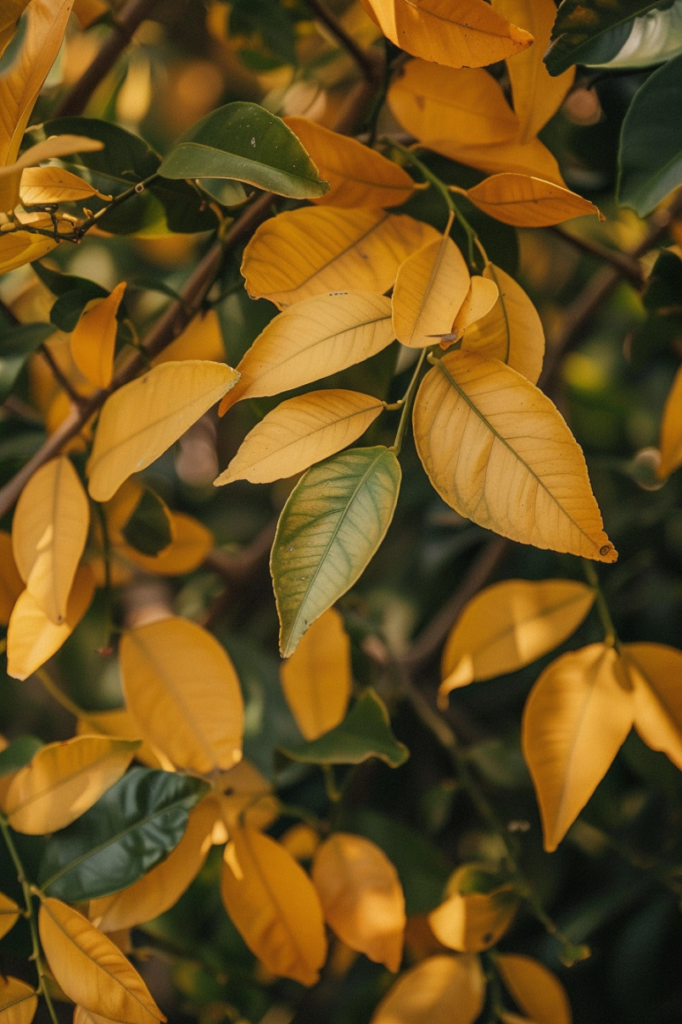
Preventative Care for Healthy Leaves
Maintaining lush, green leaves on your lemon tree requires proactive care and attention to its environment.
Let’s delve into three key strategies for preventative care:
Soil Drainage
Ensuring your lemon tree is planted in well-draining soil is essential for preventing waterlogged roots, which can lead to stress and yellowing leaves.
Here’s how to optimize soil drainage:
- Choose the right soil: Select a soil mix specifically formulated for citrus trees, or amend your existing soil with compost or perlite to improve drainage.
- Test soil drainage: Before planting, observe how water drains in the planting area. If water pools or takes a long time to drain, consider raised beds or planting mounds to improve drainage.
- Add organic matter: Incorporating organic matter like compost into the soil improves its structure, allowing water to flow freely while retaining essential nutrients for your lemon tree.
Mulching
Mulching around the base of your lemon tree offers numerous benefits, including moisture retention and soil temperature regulation.
Here’s why mulching is important and how to do it effectively:
- Moisture retention: Mulch acts as a protective layer, reducing moisture evaporation from the soil and helping to maintain consistent soil moisture levels, especially during hot or dry periods.
- Soil temperature regulation: Mulch insulates the soil, keeping it cooler in hot weather and warmer in cold weather.
- Mulching materials: Use organic mulch materials such as wood chips, straw, or shredded leaves.
Regular monitoring
Regularly monitoring your lemon tree allows you to detect and address issues early, before they escalate into larger problems.
Here’s how to effectively monitor your tree:
- Visual inspection: Take time to visually inspect your lemon tree, paying attention to leaf color, texture, and overall appearance.
- Check soil moisture: Periodically check the moisture level of the soil by feeling it with your fingers. Adjust your watering schedule accordingly to ensure consistent moisture levels.
- Prune as needed: Remove any dead, damaged, or diseased branches promptly to promote airflow and prevent the spread of pests and diseases.
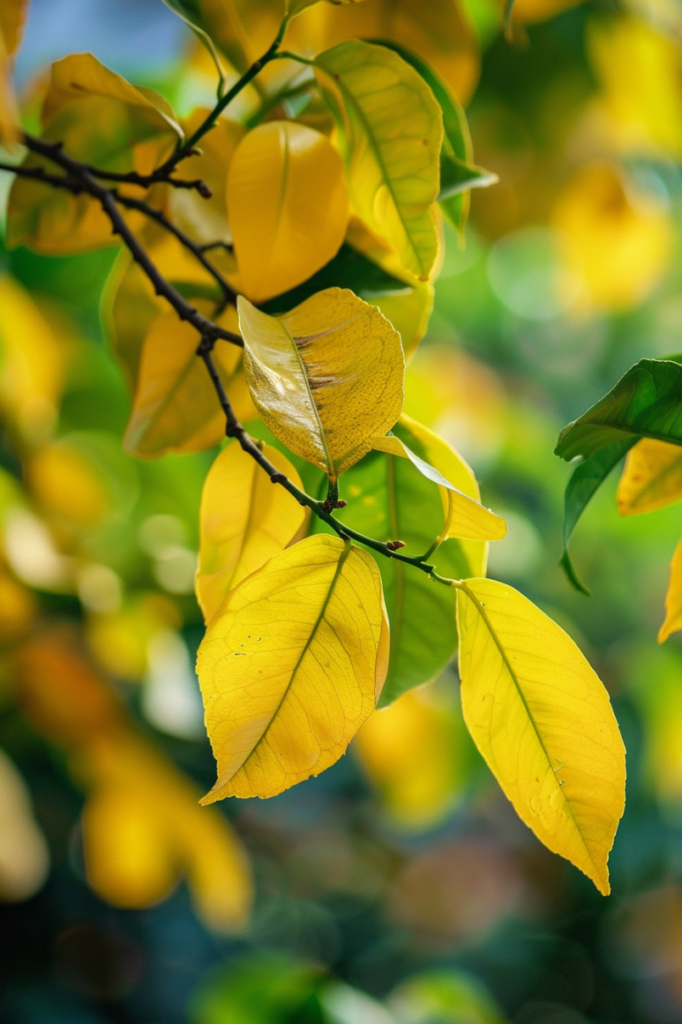
- Read also: Gardening Hacks: Solving the Yellow Leaf on Pothos
- Read also: Yellow Leaves on Orchids: Here’s What You Need to Know
Conclusion
Yellow leaves on lemon trees can be caused by a variety of factors, including environmental stress, nutritional deficiencies, pests, and diseases.
By following the steps outlined in this article, you can diagnose the cause of yellow leaves and take steps to address the issue.
Remember to water wisely, ensure sufficient sunlight, fertilize regularly, and monitor your tree for signs of pests and diseases.
With proper care, your lemon tree can thrive and provide you with delicious fruit for years to come.
FAQs
The most common causes of yellow leaves on lemon trees include overwatering, underwatering, lack of sunlight, cold temperatures, magnesium deficiency, nitrogen deficiency, iron deficiency, pests, and diseases.
To prevent yellow leaves on your lemon tree, ensure proper watering practices, provide sufficient sunlight, fertilize regularly, and monitor your tree for signs of pests and diseases.
Common signs of pests and diseases affecting lemon trees include yellowing leaves, leaf drop, and the presence of insects or fungal growth.
To treat yellow leaves on your lemon tree, address the underlying cause by adjusting watering practices, providing sufficient sunlight, fertilizing regularly, and treating pests and diseases as necessary.



